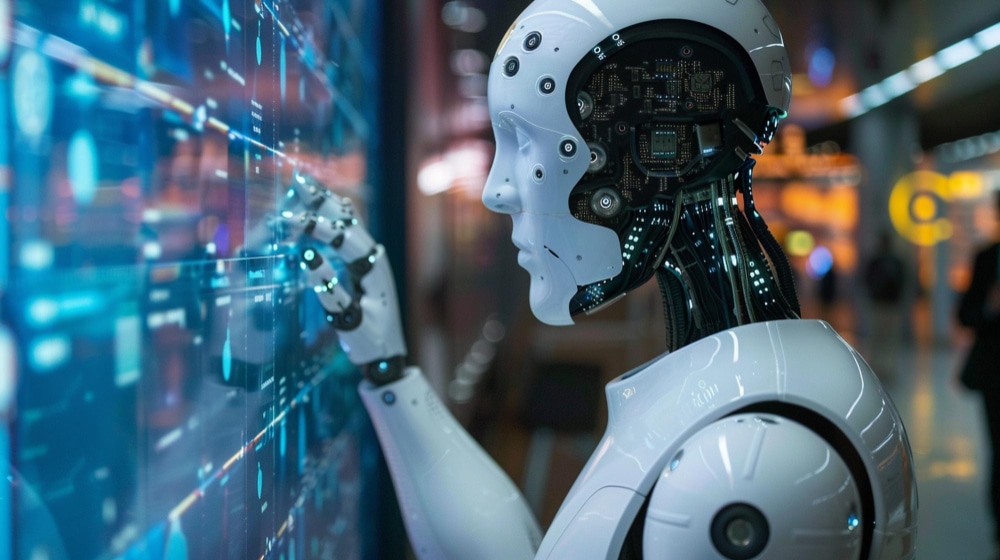Big Data e Artificial Intelligence (AI) are two of the most disruptive technologies of the 21st century. They are changing the way businesses and governments analyze large amounts of data, improving decision making, operational efficiency and personalization of services. This article explores how these two technologies complement each other and what impact they have on different sectors.
What is Big Data?
The term "Big Data" refers to large data sets that, due to their volume, velocity and variety, cannot be efficiently managed or processed using traditional tools. This data can come from multiple sources, such as social networks, sensors, business transactions and mobile devices, and is constantly expanding.
- Characteristics of Big Data:
- VolumeThe amount of data generated daily is immense. According to recent statistics, 2.5 quintillion bytes of data are created every day worldwide.
- SpeedData is generated in real time, which requires immediate analysis to be exploited.
- VarietyData can be structured (databases) or unstructured (videos, images, texts).
- TruthfulnessData quality assurance is critical, as not all data sets are useful or accurate for analysis.
Companies such as Amazon o Netflix use Big Data to better understand their customers and offer personalized recommendations. Other sectors, such as healthcare or finance, also benefit from massive data analysis to detect behavioral patterns and prevent fraud.
What is Artificial Intelligence?
The Artificial Intelligence is the ability of machines to mimic human behavior through the use of advanced algorithms. The IA enables systems to perform tasks such as pattern identification, decision making and prediction of future events.
- Key areas within AI:
- Machine LearningAlgorithms that learn and improve automatically from experience without the need to be explicitly programmed.
- Deep LearningA sub-branch of Machine Learning that uses artificial neural networks to process large volumes of unstructured data, such as images and videos.
- Natural Language Processing (NLP)This area focuses on the ability of machines to understand and interpret human language, enabling applications such as virtual assistants and chatbots.
The impact of AI is evident in industries such as automotive, with the development of autonomous vehicles, or in medicine, where it is used to diagnose diseases more accurately than conventional methods.
Big Data vs. Artificial Intelligence: Key Differences

Although Big Data e Artificial Intelligence are often connected, it is important to note that they refer to different concepts that play complementary roles in the analysis and processing of information.
Big Data refers to the collection and management of large volumes of data, which can come from a variety of sources, such as social networks, sensors, business transactions and more. This data is characterized by the "four Vs": volume, variety, speed y veracityThis makes them difficult to manage with traditional tools. The objective of Big Data is to store y organize These data can then be used in analysis processes.
On the other hand, the Artificial Intelligence focuses on process these large volumes of data and extract value of them. Through advanced algorithms and Machine Learning models, AI can analyze large data sets, identify patterns, make predictions and make decisions in an automated way. Bottom line, Big Data provides the raw materialwhile AI is the tool that converts this data into actionable information.
Below is a table highlighting thes key differences between Big Data and Artificial IntelligenceThe company's main objective is to provide a deeper understanding of their characteristics and roles within the technological ecosystem:
| Feature | Big Data | Artificial Intelligence |
|---|---|---|
| Definition | Large volumes of structured and unstructured data, difficult to manage. | Ability of machines to process data, learn from it and make decisions. |
| Main focus | Storage, organization and processing of massive data. | Advanced analytics, pattern recognition, automated predictions. |
| Target | Extract useful information by analyzing large amounts of data. | Use data to mimic human intelligence and make decisions. |
| Key components | Volume, variety, velocity, veracity (the 4 V's of Big Data). | Machine learning algorithms, neural networks, expert systems. |
| Processing method | It is based on advanced techniques such as Hadoop and distributed databases. | It uses Machine Learning, Deep Learning and Natural Language Processing (NLP) algorithms. |
| Typical applications | Storage of large volumes of data for analysis, reporting and visualization. | Facial recognition, autonomous vehicles, virtual assistants, medical diagnostics. |
| Role in decision making | It provides the data needed to make informed decisions. | Analyze and make automated or predictive decisions based on the data. |
| Mutual dependence | AI needs large volumes of data to be trained effectively. | It relies on Big Data to generate patterns and improve the accuracy of its predictions. |
| Tools and technologies | Hadoop, Spark, NoSQL databases, cloud storage. | TensorFlow, PyTorch, expert systems, artificial neural networks. |
| Type of data handled | Structured, unstructured (text, images, videos, audios, etc.). | Structured and unstructured, transformed into useful information by algorithms. |
| Automated processes | Data storage, filtering and extraction through advanced techniques. | Automated decision making and pattern-based predictive analytics. |
Real-world use cases of Big Data and Artificial Intelligence

Currently, there are many sectors that have successfully implemented these technologies. Here are some examples:
- HealthHealthcare technology companies are using Big Data to analyze medical records and predict disease risk. In turn, AI helps improve diagnostic accuracy by analyzing medical images or patterns in symptoms.
- AutomotiveAutonomous vehicles are a clear example of the synergy between Big Data and AI. Smart cars use large amounts of real-time data (traffic signals, weather data, driver behavior) that, together with AI algorithms, enable driving without human intervention.
- E-commerce: Platforms such as Amazon or Alibaba use AI to analyze user preferences, offering personalized recommendations in real time based on the analysis of their previous purchases.
- Legal sector: In the legal sector, Big Data is being used to analyze large amounts of legal information, such as court precedents and contracts, allowing lawyers to quickly identify patterns and trends in past cases. In turn, Artificial Intelligence is transforming the review of legal documents, automating processes that traditionally took weeks, such as due diligence, reducing errors and speeding up analysis time. In addition, predictive analytics systems are being developed, allowing lawyers to more accurately forecast trial outcomes based on historical data, improving strategic decision making in litigation and negotiations.
▶ You may be interested in: Artificial Intelligence in the legal sector
Advantages of implementing Big Data and Artificial Intelligence in enterprises
The implementation of Big Data e Artificial Intelligence in companies brings with it numerous competitive advantages. Some of the most outstanding ones include:
- AutomationAI enables companies to automate processes that previously required human intervention, such as customer service through chatbots or supply chain optimization.
- Predictive analyticsBig Data: With Big Data, organizations can predict future trends based on historical data. This is key in sectors such as fashion, marketing and finance, where accurate forecasts can significantly improve decision making.
- CustomizationCustomer data analysis allows us to offer personalized products and services, thus increasing customer satisfaction and loyalty.
- Resource optimizationAI technologies can improve the efficiency of internal processes, reducing costs and optimizing the use of resources.

Transform your strategies with ENIGMIA!
Discover the power of Big Data and the Artificial Intelligence to boost your marketing and communication. At ENIGMIAWe help you analyze data in real time, optimize campaigns and anticipate market trends. Don't get left behind: turn information into action today and grow your business intelligently.
The Future of Data Analytics
The differences of the Big Data vs Artificial Intelligence are clear, but these concepts will continue to shape the future of technology for years to come. As companies continue to adopt these tools, we will see an increase in the personalization of services, improvements in operational efficiency and the emergence of new applications that will transform entire industries.
Companies of all sizes should consider integrating these technologies to remain competitive in an increasingly digitized world.




